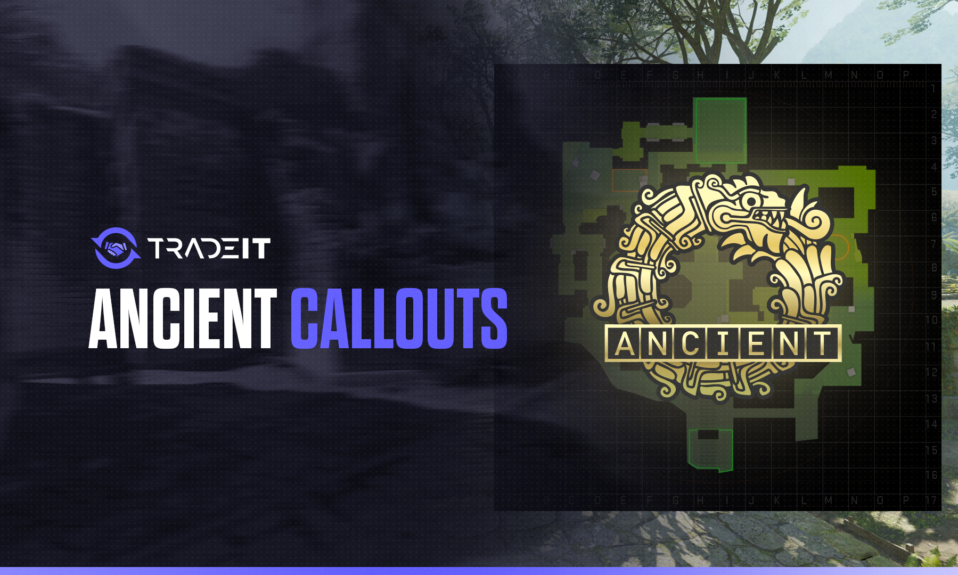
Feeling lost in the ancient ruins of CS2’s Ancient map? Do enemy snipers have you dodging shadows instead of bullets? Don’t get mummified in confusion! This guide will be your Rosetta Stone, deciphering the cryptic callouts and turning you into an Indiana Jones of in-game navigation.
Grab your virtual fedora and prepare to explore the hidden corners (and deadly angles) of Ancient like a seasoned pro!
Key Takeaways
- Knowing Ancient’s CS2 map callouts helps teams coordinate, secure vital areas like mid, and gain advantages at the T-Spawn and CT Spawn starting points.
- B Site’s complexity with positions such as Bench, Boat, Pillar, and Banger requires thorough knowledge of callouts for effective defense and retakes.
- A Site strategies hinge on mastering callouts for key positions like Triple Box, Back Site, and understanding how to navigate A Cross and A Plant areas for control.
A-Site Callouts
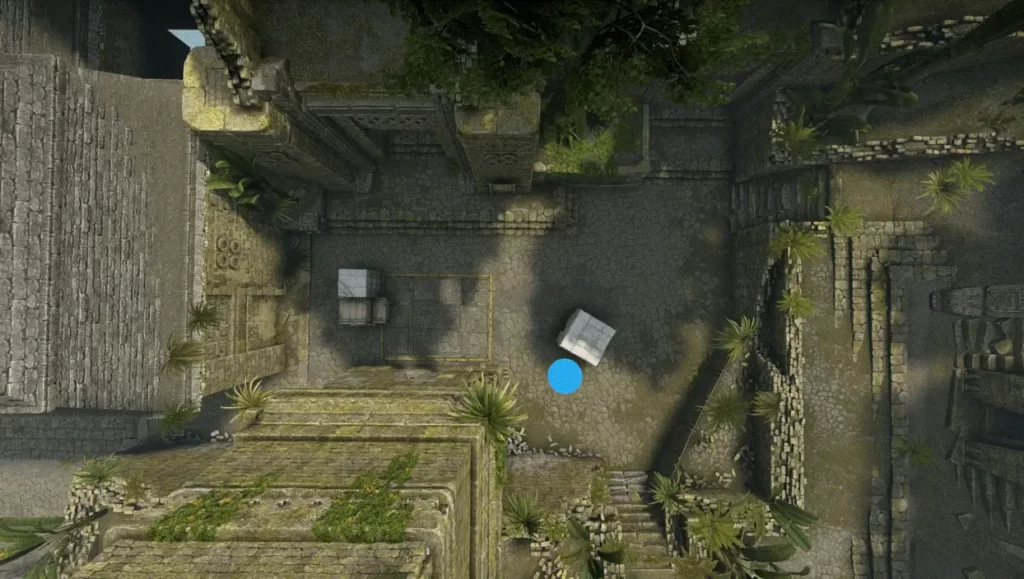
Defending A Site is an art form where utility plays the brush and the map, the canvas. It is a place where knowledge and preparation converge, where each grenade thrown is a stroke that adds depth to the defense.
The mastery of A Site is not just in holding ground but in sculpting the space with precision, turning it into a fortress impenetrable by the unprepared assailant.
- A Site: The main area where the bomb can be planted, situated between CT Lane, Short, and Big Box.
- A Main: The primary entrance for Terrorists approaching from T-Spawn to A Site, leading into Long.
- Long: One of the two main entrances for Ts to use when entering A Site, providing a view of Boost before entering the site.
- Boost: A position to the right of Long when entering A Site through A Main. CTs often boost teammates here for better visibility and defense.
- Big Box: A large crate next to A Site, useful for cover and strategic positioning.
- Single: A narrower crate near Plat, providing cover for players defending the site from Plat.
- Plat: A raised area in the corner next to A Site, offering a vantage point for defenders.
- Triple Box: A set of three boxes towards the back of A Site, offering a safer planting spot for Ts if CTs are playing from CT Lane.
- CT Lane: The path connecting CT Spawn to A Site, one of the quick entrances for CTs to A Site.
- Temple: A passageway connecting CT Spawn to A Site, offering a flanking route for CTs.
- A Short: The connection between Donut and A Site, often referred to simply as Donut due to its shape and strategic importance.
- Stairs: The area connecting Split to A Halls, used by Ts to move towards A Site.
- Split: An area connecting T-Spawn to Elbow and Stairs, providing access to both Mid and A Site for Ts.
- Elbow: A corridor connecting Split and Mid, often used by Ts for a mid-split strategy.
Also Check: Mirage Callouts in CS2
B-Site Callouts
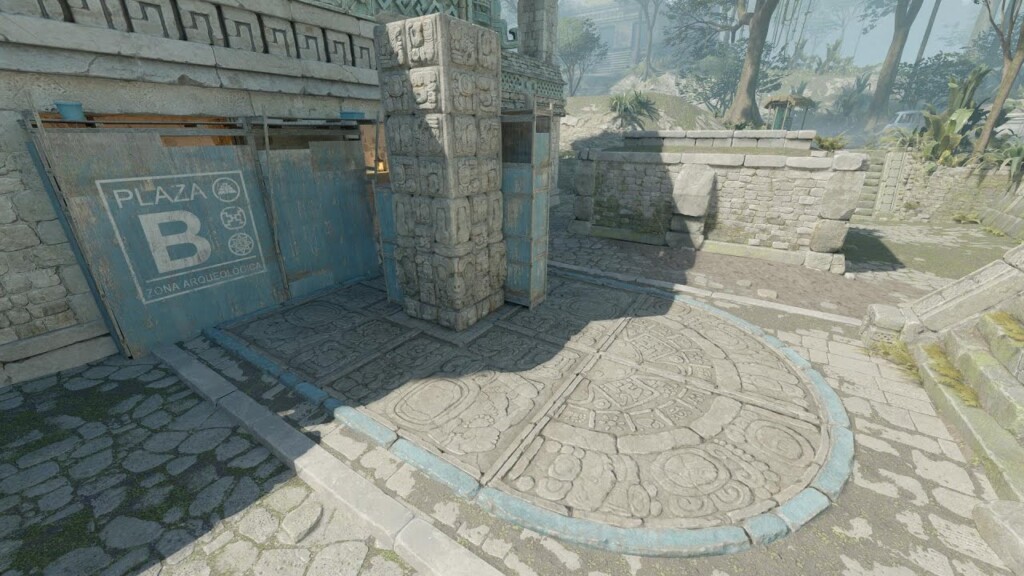
B Site, the sanctuary where the bomb can be laid to rest, is framed by the stoic Ramp, the watchful House, and the steadfast Square. It is here that the Pillar stands guard, a monolith providing cover and a fulcrum around which the defense pivots.
The obelisks and narrow corridors of B Site demand a retake strategy from the CTs, for the Terrorists’ multiple entry points make direct defense a perilous endeavor.
- B Site: The primary bomb planting area, situated between Ramp, House, and Square. This is where the bomb is planted.
- T-Lower: An area connecting various pathways towards B Site, positioned just beyond the ruins exit.
- T-Upper: A lift that provides access to the excavation and the central catwalk in the map’s middle.
- Ramp: An extended ascent from T-Lower leading towards B Site, often used for quick rushes.
- Excavation: A small room serving as a route into B Site.
- Dark: A narrow corridor connecting the excavation area to the entrance of the cave.
- Cave: A spacious chamber just before the entrance to B Site, crucial for holding or executing plays.
- Pillar: A tall structure within B Site, providing cover and strategic advantage for defenders.
- Main B: The primary pathway linking B Site and Cave.
- First Lane: A distant passage mainly used by defenders to approach B Site.
- Second Lane: A closer passage serving as an alternate route for defenders.
- Back Alley: An expansive area situated beyond the two entry lines leading into B Site, facilitating rotations and flanking.
- Alley: The initial segment preceding the secondary entry line into B Site, connecting House to B plant via B Short or B Long.
- B Short: The shortest route from CT to B Site, crucial for quick rotations and defenses.
- B Long: The area between the bomb plant zone and Back Alley, offering a longer approach for defenders.
- Pillar: Provides cover for players during engagements, particularly useful for CTs defending the site.
- Ninja: A corner within B Site often used for hiding and executing surprise plays.
- Construction: A wooden area used for boosting and providing additional firing angles.
- Lamp Room: An area creating shadows that CTs can use for tactical advantages during defense.
CT Spawn
CT Spawn is the starting point for Counter-Terrorists at the beginning of a round on Ancient. It connects to several key locations, providing routes to both bomb sites and strategic positions on the map:
- CT Lane: Leads from CT Spawn to A Site, offering quick access for defenders.
- Temple: Another path from CT Spawn to A Site, often used for strategic rotations.
- Snipers Nest: Provides a vantage point over Mid, allowing CTs to control this crucial area.
- Alley: Connects CT Spawn to Back Halls and eventually to B Site.
Also Check: Nuke Callouts in CS2
T Spawn
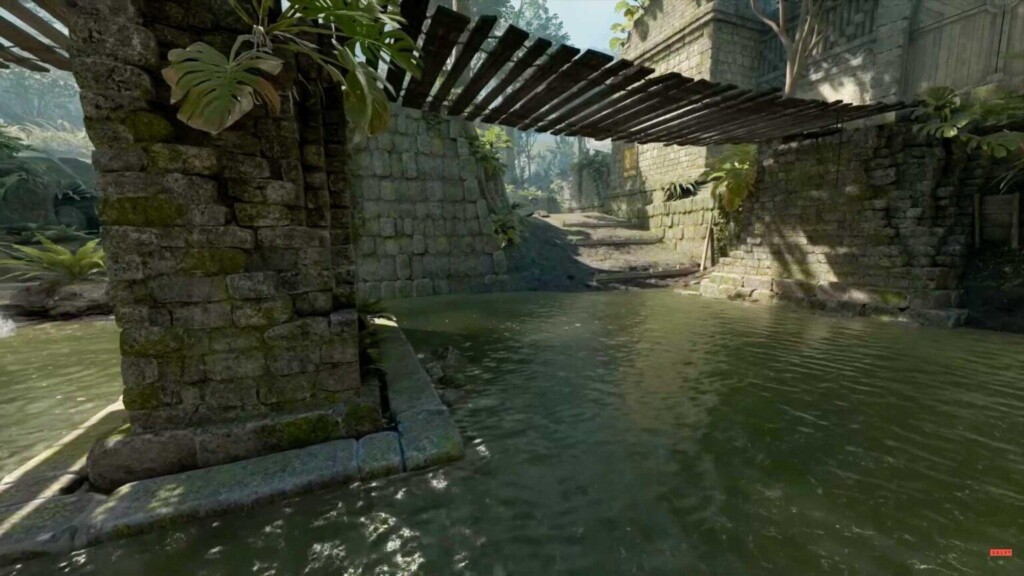
T Spawn is where the Terrorist team starts each round. It provides access to multiple pathways for executing strategies:
- Tunnel: Connects T Spawn to Water, often used for rushing B Site.
- Split: Leads to Elbow and Stairs, giving Ts access to both Mid and A Site.
- Ramp: Directs players towards B Site via an extended ascent from T Lower).
Jungle
Jungle is an expansive region connecting T Ramp to the exit leading to the middle of the map, surrounding a large stone column.
It offers maneuverability and is crucial for Ts pushing towards Mid or rotating between sites.
- T Lower to B Site: A sloped ascent from T Lower to B Site, often used for quick rushes by the Terrorist team.
- Wide Entryway: The width of Ramp allows for multiple players to advance simultaneously, making it a crucial point for coordinated attacks.
Also Check: Inferno Callouts in CS2
Ramp
Ramp is a sloped pathway that connects T Lower to B Site. It is one of the main routes for Terrorists to push into B, often used for quick rushes, especially on eco rounds.
- T Ramp to Mid: Provides a route from T Ramp to Mid, allowing Ts to maneuver between these areas.
- Surrounding the Stone Column: Encompasses the area around a large stone column, offering cover and tactical positioning options.
Connector
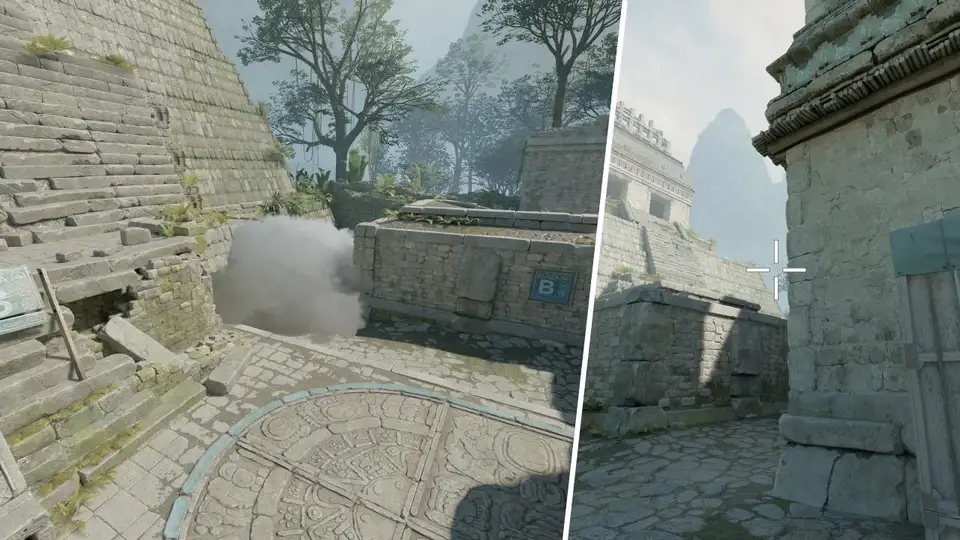
Connector is a narrow passage that links different parts of the map:
- Mid to A Site: Often used by Ts to rotate and split their attack.
- House to Snipers Nest: Provides access between these areas, allowing CTs to reposition quickly.
Window
Window on Ancient refers to several potential strategic positions:
- Snipers Nest Window: Overlooks Mid, allowing CTs to control this area with an AWP or rifle.
- Lamp Room Window: Overlooks various passages, useful for defending or controlling rotations.
Also Check: Dust 2 Callouts in CS2
Underpass
Underpass is a lower area of the map that provides a stealthy route for players:
- From Tunnel to Water: Allows Ts to move towards B Site without being easily spotted.
- Connecting to Mid: Can be used for surprise attacks or rotations.
Frequently Asked Questions
Mid control in Ancient is crucial as it offers pathways to both bombsites, enabling more strategic maneuvers. It’s a vital junction that can tilt the game in your favor if you know how to utilize it effectively.
If you want to excel at B Site, make sure to master positions like Boat, Pillar, and Banger. These spots are essential for both defense and offense in the game.
To effectively navigate A Cross and A Plant, it’s important to control areas like Boost and Short, as they provide tactical advantages that can influence your strategies. The connection between these areas is crucial in maximizing your efficiency.
In Ancient, secondary spaces like Chamber Lane and Cubby hold strategic significance and can give you an edge in the game. Try to utilize these areas to your advantage.
Callouts are important in CS2 because they facilitate effective team communication and coordination, ultimately leading to a successful round.


